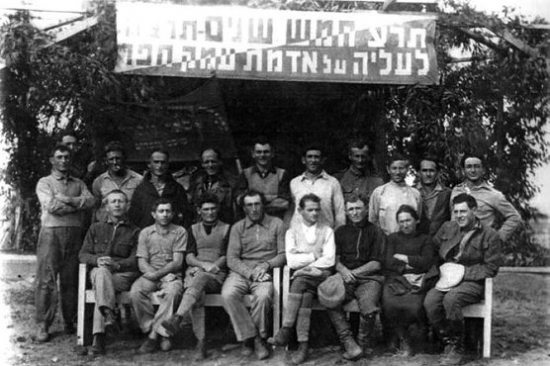
20 first settlers of Kfar Vitkin
Gidon Levitas passed away suddenly on August 29, 2010. This article was the last he wrote and it was in his computer waiting to be sent to the ESRA Magazine. We are proud to publish it, and sad that Gidon is not here to see it.
During 2010 Israel observed many special historical anniversaries.
Landmark dates in Jewish settlement chronology, such as the centennial of the Merhavia cooperative village experiment near Afula in the Jezreel Valley [Emek Yizre'el] and of Kibbutz Degania's founding in the Jordan Valley [Emek Ha-Yarden] in 1910, remind us how our pioneering forebears struggled to barely survive in bleak and unpromising times. Setting out to establish footholds for themselves and foundations for a Jewish homeland in Eretz Yisrael, they endured long years of hardship and ill health and many met with untimely deaths.
As a boy, I recall reading 'The Song of the Valley” by the renowned Jewish author Sholem Asch, a semi-fictional story about pioneers (halutzim) of a kibbutz. He had visited Israel in 1936 and wrote an inspiring description of its tenacious Jewish agricultural settlers and their accomplishments against heavy odds.
Most of us, 'Johnny-come-lately' immigrants to Israel by comparison, owe an enormous debt to these forerunners who, starting from scratch during the eras of Turkish rule and later under the British Mandate in Palestine, laid the groundwork for the country we now live in. We, today's residents and citizens of Israel, are beneficiaries of their endeavors.
This year, residents of the Hefer Valley [Emek Hefer] in the Sharon region, marked the eightieth anniversary of their veterans who settled the land in 1930. Their story has also entered Israeli history. It, too, is inextricably linked to the story of Canadian Jewish Zionists who at their 1927 convention in Winnipeg, pledged a staggering sum of one million dollars to the Jewish National Fund [Keren Kayemet] for purchasing the 50,000 dunam land tract of Emek Hefer and how they honored their commitment.
ON THE PIONEERS' TRAIL
The road that turns off the main Tel Aviv-Haifa highway at Havazelet Ha-Sharon village junction, continues a few kilometers northwards, passing moshav Bitan Aharon and an old, two-storey structure known as 'Beit Harishonim' and ‘Habayit hagadol' ['house of the first settlers' and 'the big house' respectively]. From there it's a kilometer or so to the entrance of moshav Kfar Vitkin.
Eighty years ago, on January 3rd 1930, twenty young pioneers consisting of eighteen bachelors and one married couple, took possession of the old khan later known as 'the big house' and began work on the land which the Jewish National Fund had by then acquired and registered. Engaging in small scale agriculture and also in patrolling the area and guarding it from marauders, they relocated in 1933 from the 'bayit hagadol' to wooden, makeshift bungalows and subsequent concrete block homes constructed on Kfar Vitkin's land plots allocated to new members.
I personally became acquainted with many of Kfar Vitkin's founding members - including my wife's parents, Tehila and Hayim Ashlagi, whom I first met in 1962 - and learned much about how they had embarked on their enterprise to build a moshav cooperative in Kfar Vitkin, the first Jewish village in Emek Hefer.
Theodor Herzl once wrote enigmatically: 'Dream and deed are not as different as many think. All the deeds of men are dreams at first and become dreams in the end'.
Among the dreamers of Jewish national revival in modern times who took practical steps to create new realities in the late nineteenth and early twentieth century Eretz Yisrael, was Yehoshua Hankin, in charge of land purchases - land redemption for the Jewish National Fund. After protracted negotiations, he clinched a deal to acquire a raw, fifty thousand dunam land tract in the Wadi Hawarith area, now known as Emek Hefer, from a Maronite Arab landowner named Antoine Tiyan.
Despite seesaw intrigues and subsequent court challenges to certifying the transaction and actually moving onto the land, the Turkish, and later, British Mandate officials eventually confirmed the contract.
This was virtually uncultivated and untamed territory between Hadera and the fledgling village of Netanya, and special funds had to be raised from Diaspora Jews to pay for the acquisition before the Jewish Agency's Eretz Yisrael office director, Arthur Ruppin and his lieutenants could permit a contingent of pioneers to actually proceed and settle on the land.
The Jewish National Fund's President in those years, Menachem Ussishkin, disregarding cautionary advice, traveled to Canada to rouse Zionist leaders and delegates at the 1927 Canadian Zionist Convention held in July at Winnipeg's Royal Ambassador Hotel. Led by their chairman, Archibald Jacob Freiman, [known as A.J.], a first generation son of a Jewish immigrant from Russia to Canada, the delegates pledged donations totaling an incredible one million Canadian dollars, of which three hundred thousand were loaned from banks and given directly to Ussishkin at the conference. The remaining funds were subsequently remitted to the J.N.F.
The story of Archibald - Aharon Jacob - Freiman and his wife Lilian's role in this special episode of Zionist endeavor was later commemorated by naming two Emek Hefer villages in their honor: Bitan Aharon, [Aharon's Pavilion] after Archibald, and Havatzelet Hasharon [Lily of the Sharon] after Lilian.
In June 2009, marking the 82nd anniversary of the Winnipeg convention, a ceremony held at the Ruppin Academic Center of Emek Hefer announced the formation of a Canadian Friends Association and elected a grandson of Archibald’s, also called A.J. Freiman, a resident of Ottawa, as its chairman. Among those attending were Dr. Don Zilberberg, a former Canadian immigrant and neighbor whom I've known in Netanya for many years, and Don's close friend, Avie Arenson from Caesaria, born and raised in Winnipeg and named Avrum Yoel at birth after his maternal grandfather, Avraham Bay, who was a delegate and donor at the Canadian Zionist Convention of 1927.
At the Kfar Vitkin historical archive run by curator Sari Gilboa, I perused pages of old documents, personal and official correspondence, protocols of meetings and land title transfer deeds, as well as black, grey and white photographs of landscapes and serious-looking young men and women working in orchards and citrus groves and manually building makeshift bridges across the Alexander river which crisscrosses Emek Hefer on its route from inland Rosh Ha-ayin to the Mediterranean Sea.
At Don Zilberberg's suggestion, I then called on Avie Arenson and his wife Sara, a historian in her own right, to learn more about grandfather Avraham Bay. “Just imagine the difficulties in making a 200 mile journey by wagon on what were barely passable roads, from Kamsack, Saskatchewan, where he had arrived as a practically penniless youngster and worked industriously for many years, to eventually become a relatively prosperous merchant, let alone undertaking a financial commitment of the magnitude he and others made to the the J.N.F.” It transpired that Avie and Sarah Arenson's daughter Yael and her husband Noam Marx, with their two sons Michael and Yinon, now live in Kfar Vitkin's extension neighborhood ['harchava'], typifying the family links to Emek Hefer.
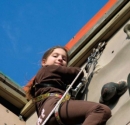 DEAR EDITOR 157 MAGAZINE
DEAR EDITOR 157 MAGAZINE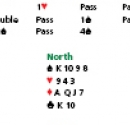 COUNTING ON INFERENCE
COUNTING ON INFERENCE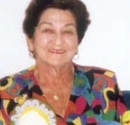 SHULAMIT LAMIE RAVINSKY 1925-2010
SHULAMIT LAMIE RAVINSKY 1925-2010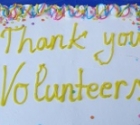 A new website in English - on Volunteering - Launched in Israel
A new website in English - on Volunteering - Launched in Israel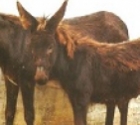 Help Needed for Abused Horses and Donkeys
Help Needed for Abused Horses and Donkeys Heather's Heseg
Heather's Heseg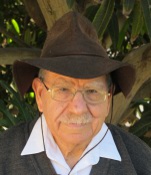 Gidon Levitas 1936-2010
Gidon Levitas 1936-2010